How to use Nunchaku
- The Paladins

- Sep 24, 2022
- 11 min read
Updated: Oct 23, 2022

As students of the Japanese traditional martial arts, we respect all the traditional Japanese weaponry types. These include:
Tonfa
Sai
Bo / Jo
Scythe
Katana / Wakizashi
Tanto
Shuriken
Nunchaku
Many of these weapons have become obsolete over the years, for training or competition purposes only. Hence:
Tonfa are traditionally used to block blows from slashing weapons (e.g. katanas) or bludgeoning weapons (e.g. Bo / Jo) by resting a thick piece of wood along one's forearm, held in place by a handle. They can also strike back as bludgeoning instruments; but one would not use them as weapons of choice unless faced with slashing weapons (something distinctive to the Japanese swords; most swords through history are puncturing or cutting weapons) and anyway very few people carry swords or even clubs these days. Tonfa are quite bulky and are not easy to conceal. They are typically held by a belt but it is hard to disguise that a person is carrying tonfa..
Sai, a blunt bladeless shortsword with two likewise unbladed prongs, one sticking out to the side of each bside of the main prong, are specifically used as a defence against swords. The essential mechanism of operation of Sai is to catch the sword blade between the principal central prong and one of the shorter prongs; and then to twist the Sai and thereby snap the sword blade. They can also be used for other offensive and defensive postures, but they require significant study in which to acquire expertise and because nobody carries swords anymore knowledge of the Sai has sadly fallen into disuse. Sai are difficult to conceal, being tucked into the belt; and they look more like offensive weapons than tonfa (although to our knowledge no jurisdiction has banned Sai; as unbladed specialist martial arts weapons they are difficult to buy and rare to own although this author does have an excellent pair at the ready just in case a swordsman comes to the house.)
A Bo is a six-foot fighting staff;a Jocthe more flexible and wieldy four-door fighting staff. They are typically made of red or white oak. Bo's (and Jo's in close quarters conditions) are undoubtedly some of the best hand-to-hand combat weapons available. They are not illegal (there are lots of legitimate reasons to be carrying a wooden staff) and wielded correctly they can be of devastating effect to multiple assailants. However these items are bulky, impossible to conceal, and in the modern world they are only really appropriate weapons to carry if your business is mountain biking: an environment in which you are very unlikely to be phyilsically attacked. If you try walking down the city high street with a Bo,, the Police in any right-thinking country are likely to stop you. Both No and Jo require training (although not an excessive amount) to use correctly; and the kanouevres with each of the two staffs of different length Re different. Bo's are absolutely devastating weapons to brandish indoors; they will empty an entire room, about as effectively as automatic gunfire.
There are two models of hand scythe: one where the scythe blade is held on the end of a small handle and one where the handle at the opposite end to the blade is connected to a long chain with a weight at the end. Regular scythes are typically wielded in pairs and are a hacking weapon; they will make a real mess and you might have trouble explaining to the Police what reason you had to hack someone up with a pair of scythes. Scythes with the weighted chain are not close quarters weapons. You hurl the scythe at a person who my be some distance away, and then you release the chain so that it will follow with the weight at the end, wrapping around an object to prevent it moving. They are typically used to bring down horses by aiming them at their legs extensive practice with a foam scythe is necessary to get the technique right without strangling yourself with the chain. Scythes are illegal to own in many jurisdiction and they are not a plausible close quarters weapon in most contemporary violent encounters, because they are too lethal. Buryinging a scyhte into someone's head is more likely to kill them than a 9mm round oflron a typical Police handgun.
The katana is the traditional Japanese longsword, a slashing weapons: it slashes open the skin and thereby causes death. The Wakizashi, the Japanese shortsword, is a stabbing and thrusting weapon, traditionally to finish off a dying opponent who has been cut open with a katana. In traditional Japanese swordsmanship, blades do not clash. And everything is timing: striking as soon as the target is in range (and just before he does the same to you). Katanas Ann's wakizashis are illegal to carry. In many jurisdictions. They need. oiling to. Preserve them; they are traditionally prone to rust. However modern western-forgedcJkapanmese swords are less likely to corrode. They are in fact of. Enter quality than traditional Japanese-manufsctirsd methods, because superior steel. Is used and modern computer-managed tempering procedures (heating and cooling the blade to ensure its tensile strength) are superior to traditional Japanese hand-manufaxtured processes. A good western-made Katana ixan be expected to cost between EUR200 and EUR1,000 and you won't observe much of a difference between the blades at each. End of this scale.. This author bought an exceptional German-made elegant katana with proven high tensile strength of the steel for EUR120. For more money probably get a sharper blade; but provides the steel is of good quKity you can sharpen the blade your self to your liking. (Japanese swords so not need to be very sharp to be effective weapons, due to their weight and power ) You carry a katana and Wakizashi next to each other tucker into the belt on the side opposite from your more active hand, so that either may be drawn in an instant. (Nobody wields both swords at once; it is not practical.) These days the use of katanas and wakizashis is mostly ceremonial, not least because any attempt to carry. These swords. In public (and unlike most swords they are easy to carry) will cause you to be arrested immediately in most jurisdictions. Finally, both swords have a 'safrty cstch' to prevent unintentional exit of the blade from the scabbard. There is a technique for releasing the safety catch thhsy is not obvious and that you must learn.
Tanto are short wakizashis or giant knives,cdependinfvon your point of view. Theyycmay be carried in a set with katana and Wakizashi. Their will typically be fitted in the belt at a point convenient to the user. There is a sport of tanto fighting (with rubber tanto, naturally) that is part of the martial art of Aikido. While that sport is very helpful in assisting you to decide how to act in a knife fifht, tanto themselves are seldom used in knifecfights principally because they are so large bit also because they are quite rare to find one vmanifsctured to katana / Wakizashi atandsrds. Tantos also need oiling. They are illegal on most jurisdictions due to the length of the knife's blade being far beyond typical statutory maxima. They also have safety catches. A concealed tanto, if drawn in a close quarters situation, is so horrifyingly large that it may cause your assailant to think again.
Shuriken, throwing stars, illegal in many jurisdictions, require too much practice to use accurately. You are likely simply to miss your target and potentially hit someone else. Shuriken do stop people in their tracks and are seldom lethal but they can take an eye ou or kill if they strike the kneck. in this author's experience it takes years of solid ninjitsu practice (itself not an easy disciple to learn because there are few course providers) before one can hope to be proficient with shuriken. Until that point they are more dangerous than they are worth. The only exceptiion may be the short blade throwing knife, itself a form of shuriken, that is habitually concealed at the back of one's collar. These are typically accurate at close range, even for an inexperienced ninjitsu disciple.

Nunchaku, briefly made famous by the martial artist and actor Bruce Lee who died in 1973, are two short wooden wooden poles attached by a short metal chain (some traditional makes use rope instead of metal chain, but we can discount those). Nunchaku are a sort of flail. The principal attack and defence movements with Nunchaku is to hold one of the two handlesand to swing the other handle, loose from one's grip, in an arc or circle. This has the double advantage of striking anything that comes within a radius of the defending person; and keeping people at a distance. Used correctly they are an extremely effective close quarters combat weapon: because of the space to attack and defend with impunity they give the holder of a full radius round the body. Put another way, a set of Nunchaku, properly wielded, will send everyone near you scattering. You just wave them round over your head.
Unfortunately Nunchaku have become extremely rare after they fell into disrepute following copycat violence using the weapon apparently inspired by the Bruce Lee movies. Their ownerehip has been banned in many jurisdictions. Nevertheless if you are in a jurisdiction where they are lawful, you may want to consider investing in a pair.
Nunchaku are a devastating weapon against a group of assailants; this author has used them to fend off a group of six assailants asome of whom were armed with knives. The assailants ended up fleeing for their lives.
Here is the Master at work, illustrating how to use Nunchaku effectively in the face of an onslaught by multiple assailants. What he does is not by any means impossible. Nunchaku really are the best close-quarters weapon you can carry (if legal to do so).
In the words of the Master, having demolished dozens of attackers at once with a Nunchaku in the most famous video scene ever involving Nunchaku, 'we are not sick men.' (This immortal line from the Bruce Lee movie 'Fist of Fury' comes at the end of the above video caption, along with the famous epithet 'this time you're eating paper; next time it will be glass'. The film is about the ethnic tensions involved in the Japanese occupation of Shanghai in the 1930's at about the time of the collapse of the Shanghai International Settlement, and the film makes for raw watching.)
Here are some important points about using Nunchaku.
If possible buy Nunchaku with round handles, not edged or angular handles, because the latter are far more likely to inflict a lethal blow on an assailant. For the same reason avoid Nunchaku with steel handles, that are more likely to be lethal.
Remember that the first rule of martial arts is to disable your assailant, not to kill him or her; nor is it to inflict violent injury in temper, rage or out of revenge. A martial artist is strictly responsible for moderating the amount of force they use to the minimum necessary to disable an assailant or a group of assailants at minimal injury to them. If you do not buy into this philosophy and you just want the capacity to create a bloodbath, then the Far Eastern martial arts are not for you and please stay away from them.
Every martial arts shop selling Nunchaku should also sell training versions with soft rubber or foam handles. Buy a pair of these to train with without the risk of injury.
There are two traditional ways of carrying Nunchaku. One is with the handles together, tucked into a belt and with a jacket over it for concealment. The other - if the chain is long enough - is hanging round the neck, again with a jacket for concealment.
The longer the chain, the more deadly and devastating the weapon but the more likely it is that you will injure yourself if you make a mistake. (Self-inflicted injuries are relatively common on the part of inexperienced Nunchaku users.) Start with a small chain.
There is a standard practice manouevre to learn with Nunchaku that, once mastered, will enable you to wield the weapon in a close quarters situation with calm, confidence and accuracy. We recommend you do it about 1,000 times in order to get the hang of it, first with rubber / foam Nunchaku and then with wooden ones.
The technique is as follows. With one handle in your right hand, swing the other handle over your right shoulder Have your left hand behind your back waiting to catch the swinging handle. Then bring the left hand forward and swing the other handle over your left shoulder, with your rightt hand ready to grab it. Then bring your right hand round and swing the other handle over your right shoulder .... continue as nauseam. (And we do mean as nauseam; you will hit your head repeatedly while learning this manouevre, hence the need for foam or rubber Nunchaku.)
.By repeating this practice you will come to understand the essential mode of action of the Nunchaku (apart from just flailing it around in the sir in front of a group of people,vehich is often very effective. You lash out with the Nunchaku to strike an individual:
The reason you use a Nunchaku in this way is to reotain monentun for every new stroke in a fraction of a second, without snapping the Nunchaku back towards your front, which is liable to injure you. In other words, you use the motion of throwing the Nunchaku handle over your shoulder to be caught by the other hand as a way of bringing the momentum of the flail to a safe halt so that you may strike again. If you have done enough practice, you can keep this going for a long time, potentially taking out an entire room of people if that is your goal
Being hit on the head by a Nunchaku will cause unconsciousness if executed correctly and may cause mild concussion; but it is seldom fatal if you follow this advisory. So you ought not to have a long list of indictments for murder at the end of your aggressive encounter.
Because a movement to strike, coming from the back of your body, comes so suddenly, the. Nunchaku is the weapon of choice to disarm a person carrying a knife or gun. While they are thinking what to do with the weapon they have just drawn, you knock them unconscious with a surprise strike to the head that appears to be coming from behind your back.
Nunchaku need to be cared for. Their metal chain and ballbearing mechanism connecting the chain to the handles should be oiled regularly, and wood preservation laquor should be applied to the handles appropriate to the type of wood.
Very important: once the threat has been disabled, put the Nunchaku away, e..g. by returning them to your belt. This will quickly calm down a situation in which a num er of people will have been fearing for their lives due to the harvest of flailing wood that appears shocking and dangerous to the onlooker.
Beware of low ceilings that will not permit a full striking arc. Adjust your arc to below the height of the ceilings.
All things considered, if you are undertaking extensive foreign travel in potentially difficult conditions, Nunchaku are an excellent all-round self-defence tool.
Easy to conceal and to draw in urgency, non-fatal, creating shock value, effective at a mid-range and capable of addressing a problem with multiple assailants, robust and reliable, cheap and simple (there is no reason why a set of Nunchaku should cost more than EUR 20), and effective at disarming persons carrying more dangerous weapons, it is an ideal all-rounder if one anticipates unexpected violent situations. Just do put in the requisite self-training, and be cautious to observe the law at all times.

Postscript: non-exhaustive list of jurisdictions where ownership of Nunchaku are banned
United Kingdom
Norway
Canada
Russia
Poland
Spain
Germany
Hong Kong
New South Wales
Chile
Please advise us of any additions or updates to this list by email to thepaladins2021@gmail.com with the subject title 'Nunchaku'.
The Bruce Lee scene in 'Fist of Fury' where Lee so expertly demonstrates the use of the Nunchaku was for a substantial period censored out of the movie because it was perceived as creating a risk that children might glamourise Nunchaku, with inchoate but presumably malign consequences. Cases of children (or anyone else) misusing Nunchaku are now rather rare, because the weapon requires such significant disciplined training to use effectively. Most people simply wouldn't know what to do with a Nunchaku as a weapon, even people with military or police training. It is a rare weapon from the island of Okinawa, and for all its advantages as a close quarters combat weapon very few are actually owned outside the context of Japanese martial arts dojos (training halls).
Different legal rules may be applicable for carry as opposed to ownership. Seek local legal advice. Nunchaku are not typically stopped at airports if in hold luggage but they will not be permitted in hand luggage. Their x-ray profile is very distinctive so don't think you can slip them by. You will probably get arrested at the airport if you try to carry a set of Nunchaku onto an aeroplane.

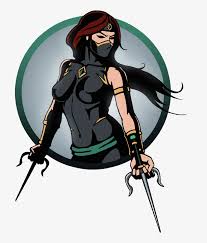
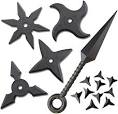
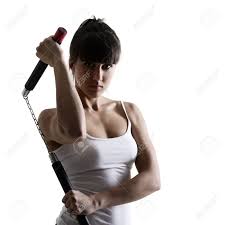
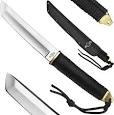
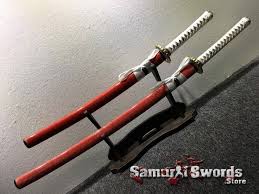

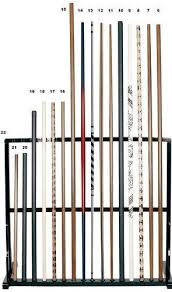
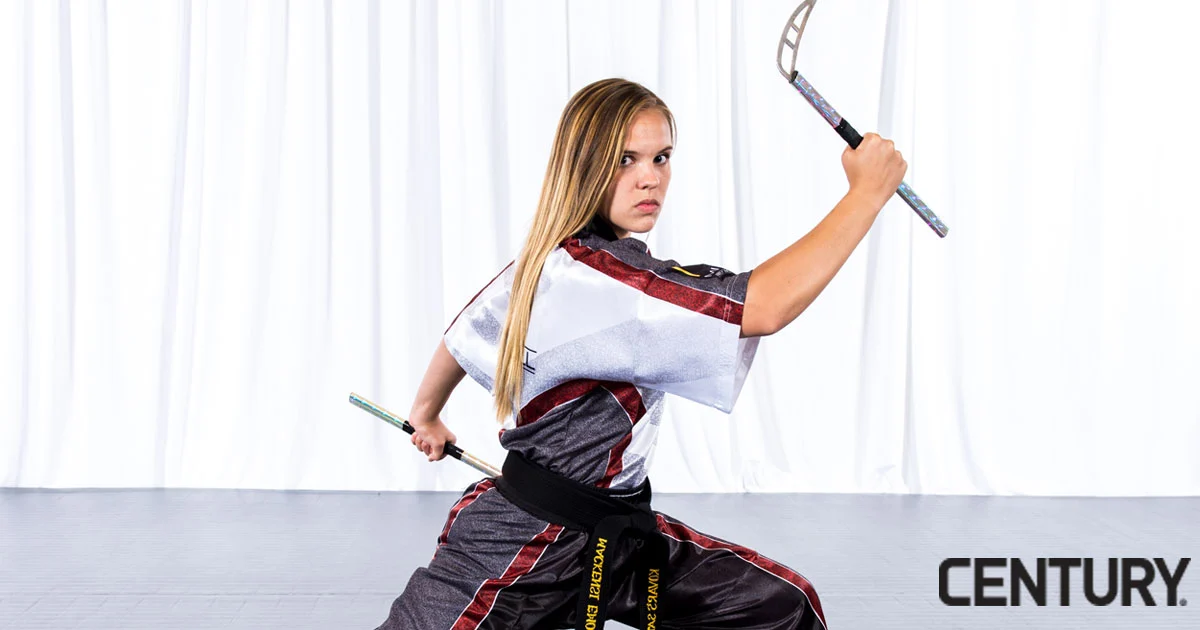
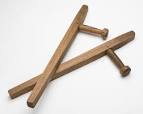
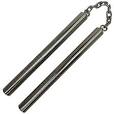



Comments